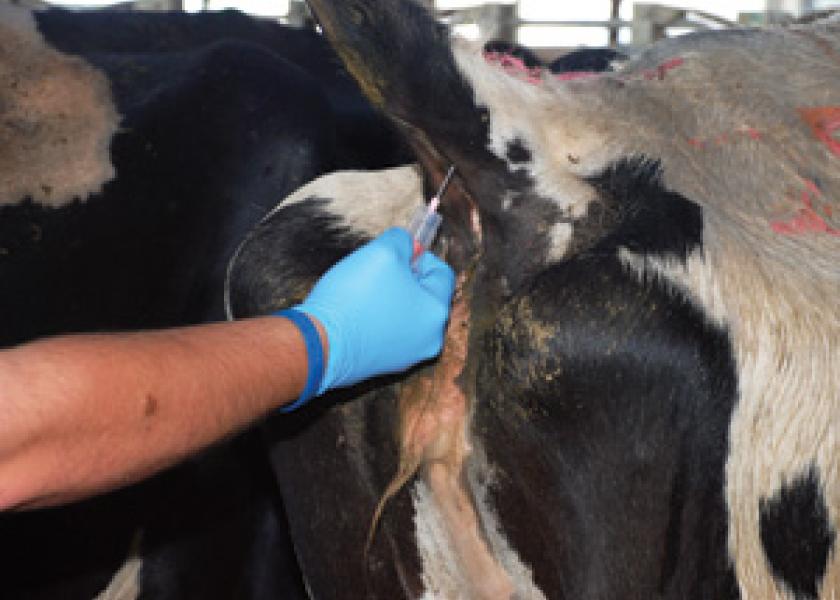Genetic Disease Resistance has Profit Potential

Sick cows are unprofitable cows. It’s an easy equation to understand. If a cow can’t milk because she’s suffering from mastitis or is too lame then she won’t contribute much to your bottom line. What if there was a way to find those cattle that are genetically superior at fending off disease?
For nearly three decades Bonnie Mallard, immunogenetist at the University of Guelph in Canada, has been researching ways to help livestock producers breed those types of healthy animals, particularly dairy cattle. Mallard believes genetic selection for immune response should improve efficiency of disease management, but it comes with some challenges.
“Disease resistance is hard to improve genetically because for the most part the heritability of these traits is low,” Mallard says. “That means the genetic progress is relatively slow.”
Mallard cautions against selecting based off resistance to a single disease. An example would be improving mastitis resistance in dairy cows at the expense of great exposure to tuberculosis. “If we do this right our hypothesis was that we should be able to achieve overall resistance to a broad range of pathogens,” Mallard adds.
To complicate matters disease recording is poor, particularly in large countries. There are a lot of dairy producers and veterinarians recording disease, but they may not do it the same way.
“If you want to look at traits associated with disease resistance you have got to have quality data,” Mallard adds.
Through research Mallard and members of the staff at the University of Guelph were able to create a test that measured immune response in dairy cattle. It was modeled around a similar procedure they had developed in swine.
The test looks at two features of the Adaptive Immunity System: cell-mediated immune response (CMIR) and antibody-mediated immune response (AMIR).
CMIR fights intracellular infections. Pathogens like viruses that cannot survive or replicate without being inside the host cell or special types of bacteria such as the mycobacterium (i.e. Johnes Disease or tuberculosis).
AMIR fights extracellular infections. This system deals with many types of bacteria, most importantly in fighting mastitis.
“There are about 2,000 genes that control disease resistance or immune response in mammals,” Mallard says. “It is definitely a highly complex trait with many genes to consider.”
The High Immune Responder test requires three farm visits during a 15 day period, but luckily only has to be done once in an animal’s life and can be performed at 2-months of age.
On the first day background measurements are taken and the animal is immunized. Two weeks later the immune system is responding to the immunizations so the magnitude of the response can be measured. Blood samples are taken for analysis to the lab and a booster is given to the cell mediated arm of the immune system.
The following day a skin thickness measurement is performed.
“Now the immune response traits that we look at we’ve selected them so that they have heritability at about 25%,” Mallard says. To put that 25% heritability in context, production traits have 25-35% heritability and confirmation traits 15-40%.
“The genetic improvement that has been made in those production traits will be in the same magnitude as what you’d anticipate you would make with the immune response traits that we selected to put in our index,” Mallard adds.
When the results are in it identifies cattle with a greater ability to resist a variety of infectious diseases, and they are known as high immune responders.
During a research project conducted at North Florida Holsteins there were 700 cows tested. The high responders in that herd were found to have reduced incidence of mastitis by 27%, metritis by 17% and retained placenta by 32% compared to the average cows.
“If you look at all of the herds that we’ve looked at to date they’re in that range of 19-30% less incidence of disease,” Mallard says.
Another study looked at mastitis in cows on 58 dairies across Canada for 5 years. High immune responders had a 17% incidence of mastitis compared to 28% for average responders and 31% in low immune responders. Mallard notes not only did low responders have the highest incidence of mastitis they also had the most severe mastitis.
Selecting for cows that are high immune responders allows for better response to vaccines, higher quality colostrum, lowered culling rates and reduced lameness.
“We’re just starting to collect data on hoof health,” Mallard relates. “High AMIR cows have less Infectious Digital Dermatitis, which is a major cause of lameness. The high CMIR cows tended to have less Interdigital Hyperplasia.”
Economically those cows that have tested as high immune responders have returned quite a bit of money. “The minimal benefit that a producer can expect from a high responder versus an average is an additional $124 per year, per cow,” Mallard adds. “That’s the absolute guaranteed minimum.”
Getting these genetic health benefits out to producers across the globe has been the latest development. In 2013, Semex worked with the University of Guelph to license use of this technology in their sires.
All marketable and young genomic bulls at Semex are tested. Then the top 10% are selected and marketed under the label Immunity . Those bulls have to be high in both the CMIR and AMIR scores.
“It’s really important to get this application easily accessible to producers worldwide,” Mallard says. “That will come not through going into the herd and doing our phenotypic tests which is fairly labor intensive, but to see if we can’t develop a genomics test.”
There have been some initial studies done to determine the DNA markers. The focus has been on Chromosome 23 which was identified because it contains Bovine Major Histocompatibility Complex (BoLA) a gene cluster responsible for regulating immunity in cattle.
“We believe that eventually this is going to change the way that producers select and manage the health of their herds,” Mallard says.







